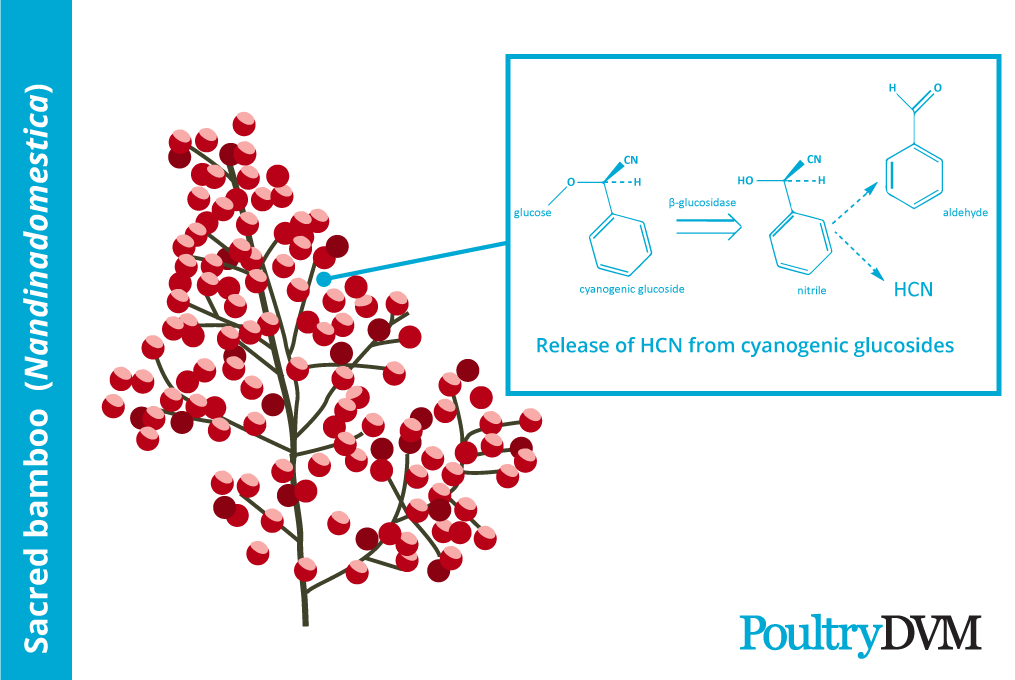Sacred bamboo (
Nandina domestica) is an evergreen or semi-evergreen woody shrub that can grow up to 8 feet in height.
N. domestica leaves start out reddish bronze, eventually turning green and then reddish in the fall. The inner bark of
N. domestica is yellow, a characteristic of many plants in the Berberidaceae family. Flowers bloom May through July, where it produces hundreds of pink and cream, fragrant flowers. Dense clusters of fleshy, spherical berries form between September and April of the following year. They are initially light green and ripen to red in the winter.
Toxic components
All parts of sacred bamboo contain cyanogenic glycosides, which convert to hydrogen cyanide when the plant is damaged. The amount of cyanogenic glycosides present varies depending on the stage of growth of the plant and plant part. The berries contain the highest amounts.
